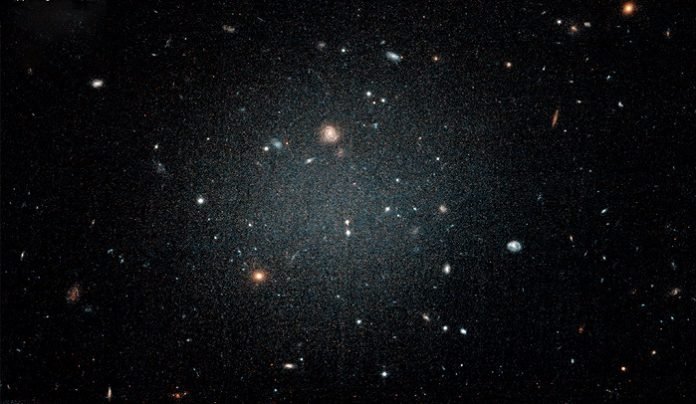
In two new study, researchers confirmed that they have found a galaxy with almost no dark matter.
The studies were led by Yale University researchers.
In 2018, the team published one paper about galaxy NGC 1052-DF2 (DF2 for short).
DF2 is the first known galaxy to contain little or no dark matter. The finding showed that dark matter is not always linked to traditional matter on a galactic scale.
That finding was also against theories that dark matter is not a substance but a manifestation of the laws of gravity on a cosmic scale.
Dark matter is a hypothetical form of matter that is thought to account for approximately 85% of the matter in the universe and about a quarter of its total energy density.
The majority of dark matter is thought to be non-baryonic in nature, possibly being composed of some as-yet-undiscovered subatomic particles.
Because dark matter dominates the makeup of galaxies, the new 2018 finding that one galaxy without dark matter led to a lot of debate within the scientific community.
In one new study, the researchers confirm the team’s initial observations of DF2.
The studies used more precise measurements from the W.M. Keck Observatory’s Keck Cosmic Web Imager.
The team found that the stars inside the galaxy are moving at a speed consistent with the mass of the galaxy’s normal matter. If dark matter exists in DF2, the moving speed should be faster.
In the other new study, the team discovers a second galaxy almost have no dark matter. That galaxy is named DF4.
According to the researchers, Both DF2 and DF4 are part of a relatively new class of galaxies called ultra-diffuse galaxies (UDGs).
These galaxies are as large as the Milky Way but have between 100 to 1,000 times fewer stars. This makes it difficult to observe.
The researchers also suggest that the lack of dark matter in these UDGs strengthens the case for dark matter.
Dark matter can be found separately and it is a substance that is not coupled with normal matter,
The team leader is Pieter van Dokkum, the Sol Goldman Family Professor of Astronomy at Yale.
In addition to van Dokkum and Danieli, team members include Roberto Abraham of the University of Toronto, Aaron Romanowsky of San Jose State University, and Charlie Conroy of Harvard.
The findings are published in The Astrophysical Journal Letters.
Copyright © 2019 Knowridge Science Report. All rights reserved.



